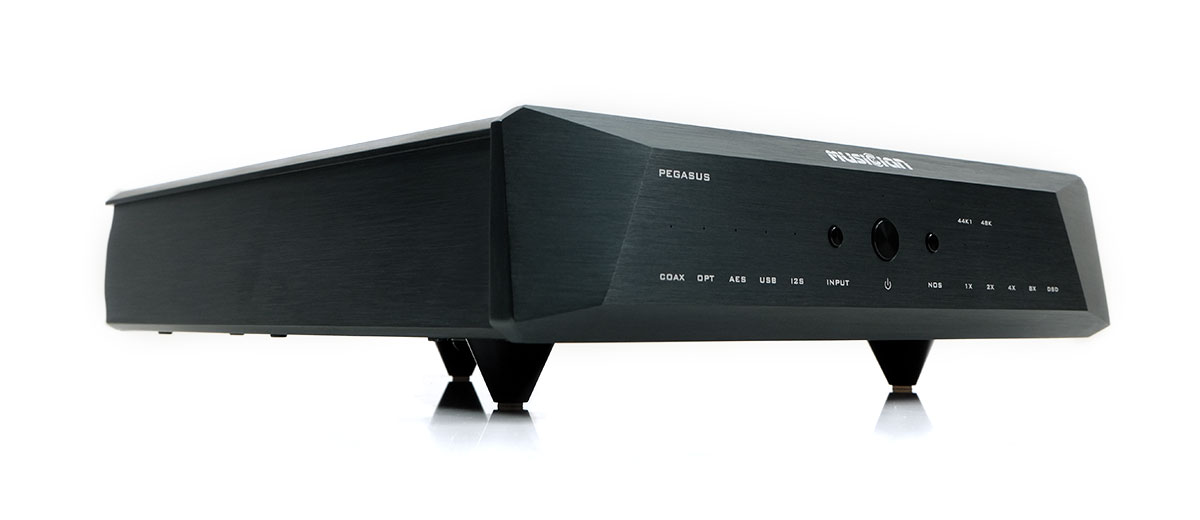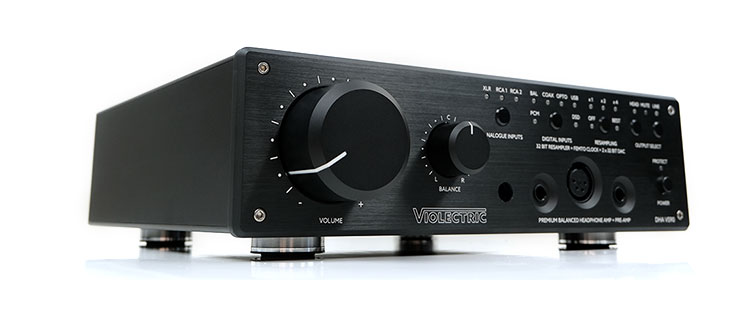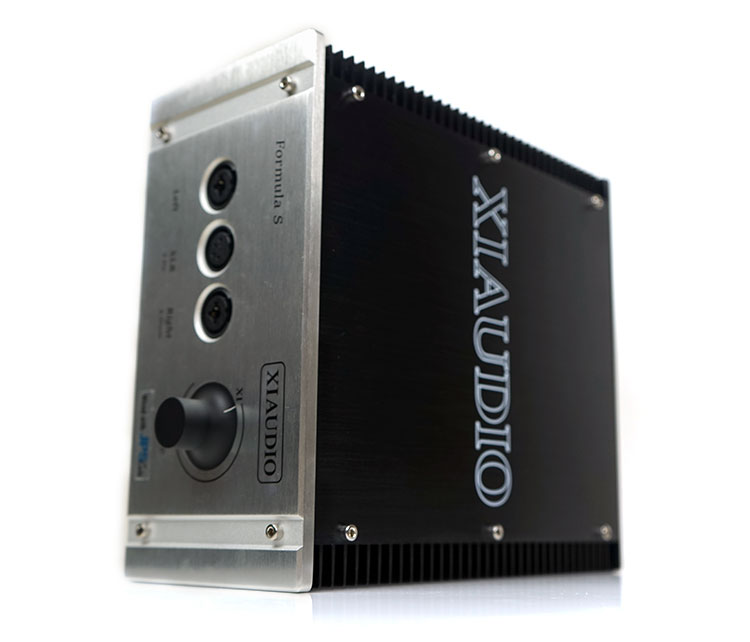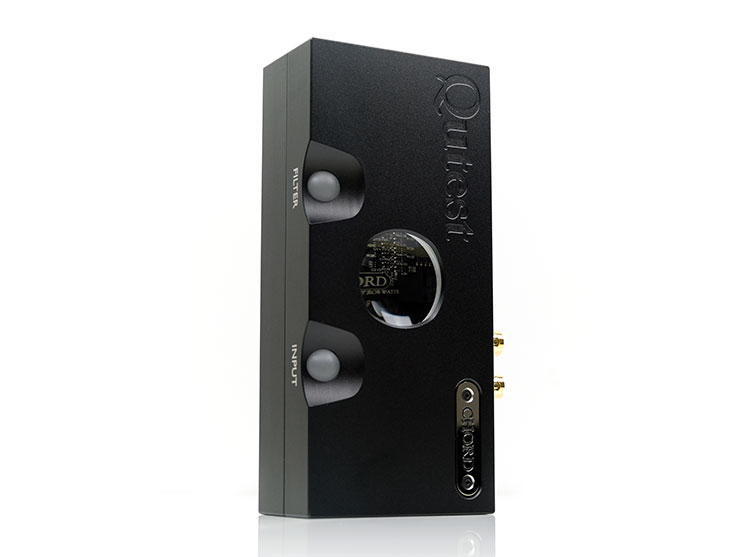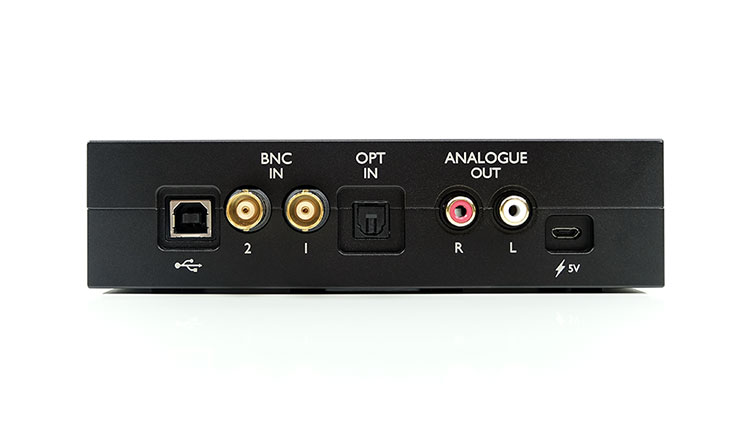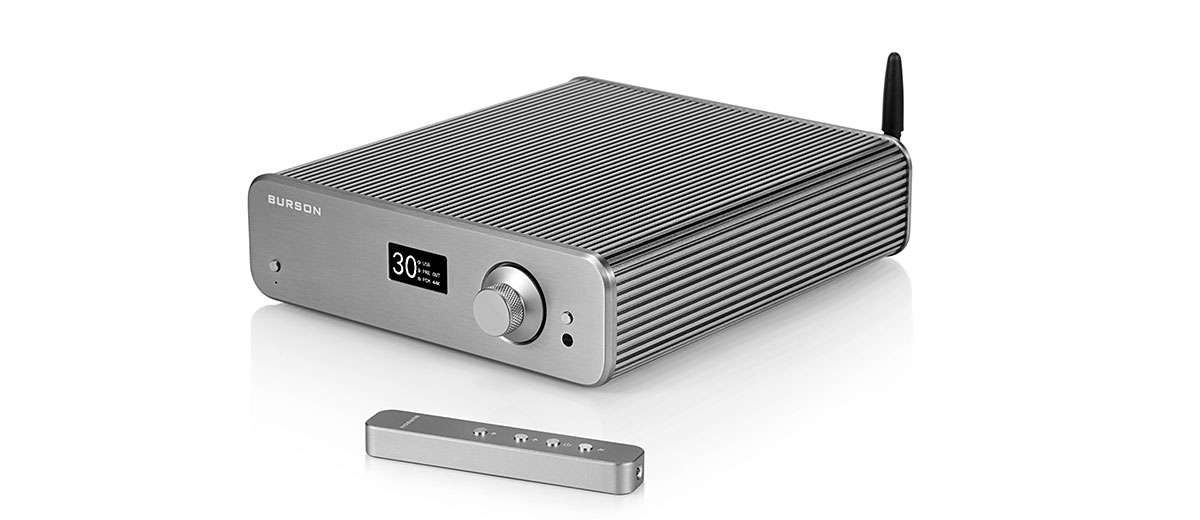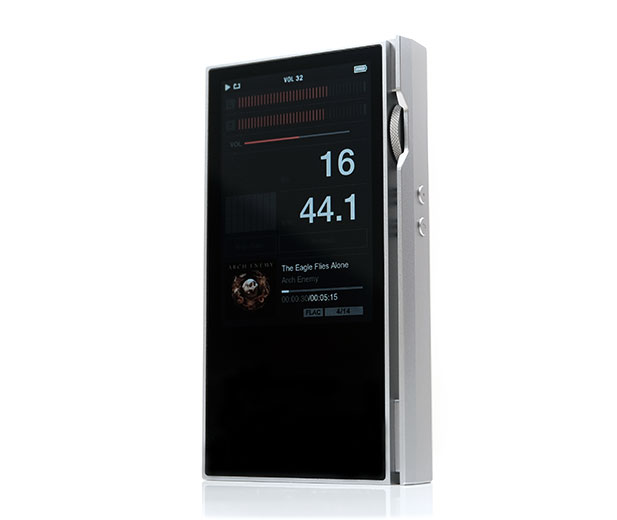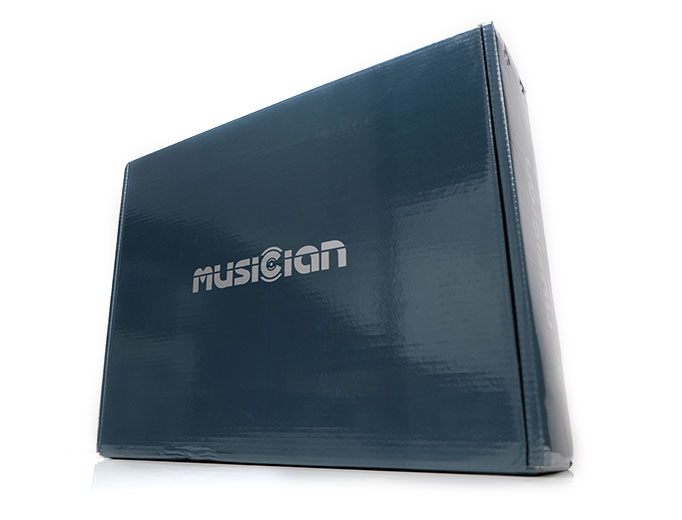Synergy
I²S
I am delighted to say that my Cayin iDAP-6 streamer I²S configuration is compatible with the Pegasus I²S input.
More than that, my old high-end Cambridge Audio HDMI cable from 2006, (name long since forgotten), was perfectly compatible with both devices so I do advise you to check your existing arsenal of HDMI cables before rushing out to buy a ‘dedicated’ I²S version.
Compatibility was a pre-review concern of mine given that Musician Audio was at pains to point out on their website that the Pegasus I²S may not always be compatible with other I²S capable transports.
Indeed, if you do check the Musician Audio website there is a caveat there regarding compatibility and a list of know compatible devices including the following:
- Jay’s Audio CDT MK2
- Matrix SPDIF 2 USB
- SOUNDAWARE D280
- Gustard U16
- Singxer SDA-1
I specifically did not want another DAC in the chain to test the Pegasus. That did seem like an unnecessary duplication since if I have one DAC I may not want another just for I²S. This feels more like where a streamer or a DAP with I²S output such as the Cayin N8 or N6ii come into play.
So, Musician Audio, please add the Cayin i-DAP 6 streamer to your rather short I²S compatibility list.
NOS & I2S
I have to admit the I²S connection sounded a little smoother than the equivalent USB output from the iDAP-6.
I cannot assure you that this will always be the case because it may well change from device to device but the I²S performance sounded more pleasing to my ear whereas the USB output had a slightly brighter tone and sharper leading edges, particularly in the midrange and male vocals. The USB connection did seem a bit more dynamic and lively which some may prefer.
This is not a huge jump, the USB performance is still very dense and smooth overall but connected to the Rupert Neve RNHP amplifier and D8000 Pro headphones the I²S came across as more balanced sounding.
NOS or OS via I²S on the Pegasus? I am on the fence about this one because I can see the pros and cons of using it and not using it. Remember, the default is to oversample, and for me, the default OS will give you a slightly cleaner more spacious sound with a bit more treble presence.
Some headphones will take to that such as the D8000 Pro which is a good reference headphone to pick up nuanced spatial cues that shimmer a little better with a cleaner tone. However, for general listening with the D8000 Pro, I tend to turn the OS to NOS (red LED on) as it produces a little more treble fade and a more natural tonal signature.
Amplifier Pairings
The Pegasus R2R DAC is a very flexible pure DAC with a distinctive natural and smooth coloration that pairs wonderfully well with good quality amplifiers.
During our review time, I especially liked the black background and timbral smoothness it can deliver to solid-state amplifiers that might be prone to slightly edgy treble performances from Sabre DAC’s or brighter sources.
Violectric Synergy
Powerhouse amplifiers such as the classic V281 from Violectric sounds full, powerful, and dense when paired with the Pegasus. However, at the same time that slightly unrefined and drier treble I tend to get with other DACs is much smoother. Smoother even than when pre-amped from the Violectric V590 using its own dual AK4490EQ DAC implementation.
I can tell you, for one thing, I prefer the Pegasus R2R DAC analog balanced into the Violectric V590 brilliant amplifier than the V590’s own energetic AKM DAC performance.
The dual AK4490 delta-sigma implementation has a nice oversampling feature and sounds very punchy with a coloration more to the musical side. It also has a smattering of lower treble forwardness that Violectric has tuned to sound quite refined. It sounds especially good with its oversampling ‘best’ option which is around 96k.
However, that killer V590 amp sounds even smoother and more refined when paired with the Pegasus DAC. It is not quite as aggressively punchy but the instrumental timbre has a denser firmer quality to it. The treble is especially smooth without ever sounding rounded and the vocal performances are gorgeous.
Especially higher-pitched female vocals, like Enya or ethereal equivalents. On the V590 DAC implementation, you get a little harmonic dissonance on the vocal, especially when not using the ‘Best’ OS option some slight sibilance or odd-harmonic infusion can creep in.
It is only really noticeable when you switch to the Pegasus which is really quite liquid and smoother on the upper mids and treble delivery.
High-end Sweetness
Paired with the XI Audio Formula S the performance is very sweet and a little lighter in weight compared to the Violectrics amps. This is an incredible tone really for a solid-state amplifier to be able to project this euphonic and airy presentation and sound almost like a traditional SET at times.
You get a hell of a lot more headroom but slightly less bass weight compared to the Violectric amps but what the Pegasus does really well is fleshing out a huge staging quality whilst retaining admirable density and firmness in the mids.
Vocals sound firm but liquid-like on the leading edges with virtually no sibilance in our tested headphones, the Final D8000 Pro, and the Meze Empyrean. I would opt for the D8000 Pro with this pairing just to take advantage of its better staging qualities compared to the darker Empyrean.
Tube Magic
The synergy with the Auris HA-2SE was immaculate. This is a very balanced sounding tube amplifier, meaty in the mids but not a typically relaxed or lushing sounding SET performance.
I have tended to pair this with the Qutest for like an eternity but after A/B’ing the Qutest with the Pegasus I might be swapping this out and pushing the Qutest to something a bit warmer.
The HA-2SE already has a very black background for a SET amplifier so with the Pegasus added you get a tremendously balanced and natural tone from top to bottom. It is not as sweet and airy sounding as the Formula S and does more to reinforce that analog-like delivery of the core HA-2SE sound.
Vocals are very sold, sibilant free and full of detailed texture. This is a pairing that the Empyrean adores, especially if you are a vocal lover. I would keep the NOS mode off for this setup just to ensure you get a little bit of firmness on the leading edges. For more reference like headphones like the cleaner sounding D8000 Pro, this setup is more convincing with NOS mode turned on.
Caveat
One caveat is that the line-out does have a slight attenuation which means volume levels from your analog amplifier need a slight push compared to other DACs and you can read more about that in our comparisons below.
It does not affect dynamic range which is just simply excellent with our tested amps, rather, just push up the dial a little from your usual settings and you are good to go.
Select Comparisons
Chord Electronics Qutest
£1195
DAC
Like the Pegasus, the Qutest is a pure DAC with no pre-amp capabilities, and also like the Pegasus, it hangs its coat on having a unique implementation.
Whereas the Pegasus is a more traditional R2R ladder designed by lots of laborious hours hand matching ladder resistors, the Qutest, completely does away with the concept of a separate DAC either delta-sigma single chip or ladder.
Instead, the Qutest uses an FPGA Xilinx Artix 7 chipset with a strong focus on digital filtering and the Watts Transient Aligned filters (WTA) tap-length capacity using a 10 element Pulse Array design.
The impetus on this approach is based on improving the delta-sigma filter performance which typically has a few hundred taps and producing a DAC performance inside the Qutest equivalent to 49,152 taps which is obviously a lot more.
The R2R of the Pegasus is completely different. The Qutest is heavily software-driven, modern digital decoding at its finest whereas the Pegasus is a throwback to a different era with a more traditional electrical and physical process using the ladder resistor topology.
Decoding
Of course, we can draw come easier comparisons in terms of performance such as decoding which surprisingly, the Pegasus has an edge on paper with its ability to decode up to 32BIT/1536kHz and DSD1024.
The Qutest is lower but still very competitive at PCM up to 32BIT/768kHz and DSD512 via USB. I would not place a huge amount of emphasis on this since right now and for some time to come, the majority of commercially available tracks have a much lower bit and sampling rate.
Neither do MQA or any wireless solution though Chord is more out of principle whereas the Pegasus is simply not able to unfold MQA with its current design.
Both do have an element of upsampling but the ability to control that is via the M Scaler for the Qutest whereas the NOS feature on the Pegasus internalizes it so you can use it without any additional costs.
The M Scaler performance will obliterate the Pegasus’s more limited sampling feature albeit at a huge cost that might make the TT2 a more sensible Chord DAC choice over the Qutest.
I/O
The Qutest is single-ended only compared to the true balanced and single-ended output options of the Pegasus. However, you can adjust the voltage rating on the Qutest analog outputs from 1.8Vrms, 2Vrms up to 3Vrms. Not quite as strong as the 4.2Vrms of the Pegasus but then you do not need that amount of voltage for an SE connection otherwise you risk distortion.
Aside from that, the Pegasus comes with a full complement of digital inputs including I2S, AES, coaxial, and USB. The Qutest has a slightly different approach.
It does include optical and USB but instead of traditional coaxial it has a pair of BNC connectors which in single-mode will pick up a coaxial connection but in dual BNC mode will give you that upsampling advantage with the likes of the Hugo M Scaler.
Design
The Qutest is tiny compared to the Pegasus but equally robust, perhaps even more so with a very dense feel to its housing which is designed from a single aluminum billet. Despite the minute size everything is very nicely laid out and with the bonus of remote control for key feature control, something which I wish the Pegasus had.
That being said, the controls on the Pegasus are more intuitive aside from the strange on/off status of the NOS functionality. The Qutest orb color control system requires a lot more manual study and even now, after a few years, I still have to occasionally refer to the manual for some features I have not used in a long time.
Performance
(Tested with an Auris Audio HA-2SE amplifier, Final’s D8000 Pro, and the Meze Empyrean. The output voltage of the Qutest was set to 2.1Vrms with both using the multiple SE input of the HA-2SE).
I think the first noticeable aspect just before we jump into the tuning differences is the slight attenuation in HA-2SE volume from the Pegasus compared to the Qutest. It is very minor but with the quick ability to move through the sources on the HA-2SE you can pick it out. I suspect this is more to do with the high impedance rating of the Pegasus output. Dynamic range is unaffected.
Tonal Summary
Overall, the Qutest has a more aggressive presentation with a more prominent bass punch and upper mids combined with a cleaner and more lively treble presence. Just to be clear, that is even with the Qutest digital filter set to warm. It is even cleaner and more neutral in tone when set to the “precise’ white filter.
The Pegasus has a smoother more relaxed tone with a slight fade up top but in a very natural manner. With the D8000 Pro and HA-2SE combo, the Pegasus staging present felt slightly more neutral, not as aggressive with a more liquid leading transient and an ever so slightly rounded tone to notes compared to the Qutest.
The low-end of the Pegasus actually has a bit more warmth and weight to it but the transient response is a shade slower with a longer natural decay than the quick-fire Qutest performance. The Qutest bass impresses with speed but less so with note sustain or body. A touch lighter you could say, not as dense but certainly punchier.
Mids and treble follow a similar pattern with the Qutest creating a more vivid wall of detail experience whereas the Pegasus delivers a more natural and smooth sounding timbre.
Personally, I find the more even-handed approach of the Pegasus performance to be more to my taste. The timbre is beautifully balanced with just a slight bias to even over odd-harmonics and less sibilance creeping into leading higher-pitched vocals or percussion.
The elevated upper-mids and treble of the Qutest create a brighter mids timbre and certainly, it is more involving and precise but you do pick up a bit more sharpness in percussion and female vocals that might not be for everyone.
Burson Composer 3X Performance
$1144
DAC
Our award-winning DAC from 2020, the 3X Performance is both a pure DAC and a pre-amp, as well as throwing in some Bluetooth capability to boot. Unlike the R2R implementation in the Pegasus, however, the Burson is a delta-sigma implementation with a bit of a twist.
The DAC inside the 3X is an ES9038Q2M delt-sigma chipset which on paper is not the most high-end of chips being a 2-channel mobile chipset solution. However, Burson has deployed 4 rollable opamps to break out of the restrictions of single-chip DAC solutions and this has some advantages.
Two of the opamps bypass the DAC’s own current/voltage (I/V) conversion stage, and another 2 handle the low-pass filter is handled by the other 2 opamps. All 4 are discretely designed opamps in a dual configuration (2 per channel). In turn, Burson has supplied several types of opamps that can alter the sound signature of the DAC output whereas the Pegasus is a fixed sound.
To some extent then Burson is trying to achieve a measure of control over the DAC implementation but it is nowhere near to the amount of control Musician Audio can extract from the Pegasus R2R balanced ladder resistor implementation.
Decoding
One salient difference before we discuss the numbers is the use of an XMOS stage on the Composer which is very competitive but not as future-proofed as the Pegasus custom USB implementation.
That means a very healthy DSD512 native decoding and PCM 32BIT/768kHz for the Burson but not as bleeding edge as the Pegasus I2S and USB inputs at DSD1024 and PCM 32BIT/1536kHz. Neither offer MQA so best connect it to a transport that can stream and unfold and output if that is your bag.
The one major advantage of the Burson over the Pegasus is the ability to receive wirelessly via BT5.0 at up to LDAC quality levels which some users might find useful, especially if operating an MQA capable streamer or DAP.
Design & Features
In terms of aesthetics, the Burson is a little smaller but edgier looking. When I mean edgier the thick electroplated high-density silver aluminum curved panels of the Burson are just not as refined as the angular finish of the Pegasus.
The Burson is compact and lighter though which some might find a bonus in terms of rack fitting. Most of the weight beyond the Pegasus panels is that big toroidal transformer inside which the Composer X3 Performance does not use for power supply.
The Pegasus does lack a pre-amp feature as well as the Composer 3X Performance wireless feature so it is not quite as system flexible. It does, however, have a more flexible digital input array with I2S, the high decoding USB socket, as well as AES. The Burson only had optical and coaxial for standard connections but it can do OTG with mobile sources from its USB-C socket.
Both offer balanced and unbalanced analog outputs though variable for the Burson and fixed for the Pegasus. Fixed on the Pegasus is just a shade higher at 2.2Vrms and 4.4Vrms SE and balanced compared to the Composer 3X’s 2.1Vrms and 4.2Vrms ratings.
And yes, the Burson has a really nice aluminum remote control, the Pegasus does not. A very useful addition.
Performance
(Compared using a mix of Vivid and Classic opamps which is considered the optimal setup in our Composer 3X Performance review).
Like the Qutest comparison, you might find yourself volume adjusting as the SE output of the Composer 3X performance does have a bit more loudness to it suggesting that the impedance rating of the Pegasus output is a factor. Again, it is not a dynamic range issue as once you volume match the dynamic range of the Pegasus shines through very nicely.
Tonal Summary
I love the tonal sweetness the Burson mixed opamp configuration offers but it does sound decidedly delta-sigma in comparison to the Pegasus with a glossy type of texture with slightly less body and detail but much more articulate sounding from the upper mids into the treble.
This is a Sabre DAC implementation and for me, that still shines through in the way it teases out the treble presence. In comparison, the Pegasus doesn’t deliver quite the same energy and sparkle in the treble but instead opts for more body, a denser timbre, and overall, a more natural tone.
It does not lack headroom and that is an important point because the Pegasus does very well with headroom but rather it doesn’t fill that headroom with emphasized treble brilliance so overall, roomy up top but not as bright.
Timbre
And that of course affects mids timbre where there is a bit of a difference. The Pegasus timbre is more rounded, solid, and denser for me compared to the Burson’s sweeter and lighter tone.
The Composer 3X Performance instrumental and vocal timbre is also a little drier than the Pegasus. There is a little more treble influence adding a cleaner sounding quality. It is not a dry per see dac in its own right, but drier than the Pegasus.
Depth
Bass belongs to the Pegasus, with better depth, enhanced physicality, and in keeping with the upper frequencies, a denser more detailed texture.
You can go a pure Vivid opamp inside the Burson to get a stronger bass performance also but it still sounds a cleaner more neutral low-end with not quite the same natural decay or textured detail shining through.
With the Classic opamp fusion, the sub-bass performance of the 3X Performance is a little rolled off compared to the much better depth and rumble of the Pegasus DAC. Staging thus belongs to the Pegasus, at least in terms of depth and power.
Luxury & Precision P6
$2999
Technical
This one is a bit left of the field because it is classed as a DAP rather than a pure DAC and does cost a lot more. However, it can operate as a pure DAC and can feed a fixed voltage line-out to an analog amplifier so in many ways it can do a similar job.
The main reason for throwing it in is because, like the Pegasus, the P6 has a discrete engineered 24 BIT R2R implementation for its DAC and begs the question, just how different one R2R can sound when compared to another.
Of course, the R2R implementation on the P6 is miniaturized but the process of assembling a ladder rail of tiny matching resistors is much the same. The key differences really between these two is the FPGA and digital input management combined with the analog output and power management.
From a decoding perspective, the P6 is actually a bit more limited despite the price disparity. It offers a max 32BIT/384kHz PCM and DSD256 decoding ceiling which should suffice for 99.9% of commercial recordings out there but nowhere near as future-proofed as the DSD1024 and PCM 32BIT/1536kHz capability of the Pegasus.
Like the other DAC’s being compared, the P6 will not handle MQA but like the Burson, it can receive as a wireless device capable of LDAC decoding which I consider an advantage for modern audiophile tastes.
Design & Features
One is a DAP that can act as a DAC and the other is a pure DAC so the differences are vast beyond the shared R2R heritage. The P6 is tiny, beautifully engineered, and quite pocketable. The Pegasus is desktop size, much heavier, and relies on an AC cable with a big toroidal transformer inside.
The P6 has its own LCD panel, onboard memory up to 64GB with further memory expansion using a memory slot on the side. The Pegasus has none of that, not even a remote control sadly though its button configuration at the front is very easy to access and understand.
To the rear, it’s a win for the Pegasus in terms of I/O. The P6 does have a USB-C connection for USB-DAC duties as well as a single SPDIF socket, however, its line-out capability SE only with a switchable voltage between 1.55V and 2.45V.
The Pegasus has a lot more options, as you would expect, with that custom USB stage, I2S, SPDIF, balanced and single-ended analog outputs with a higher voltage rating as well as AES.
Performance
With the P6 set to its high voltage output of 2.45Vrms, you do have a slightly higher volume output to the HA-2SE using its line-out compared to the 2.2Vrms SE analog output of the Pegasus. This can be easily rectified by a slight tweak on the volume dial. With the lower voltage setting of the P6 at 1.55Vrms, both have a better volume match with the Pegasus marginally louder.
Of course, the Pegasus has a balanced output that will run rings around the SE in terms of channel separation and dynamic range but I did find it interesting the amount of attenuation on the SE was closer to the P6 at 1.55Vrms. Again, this might be that high impedance rating on the Pegasus analog output.
Tonal Summary
Both performances are aiming for very similar territory and I find the differences much more nuanced than say the Burson or Qutest’s glossier and brighter timbre.
Both DACs deliver excellent texture and detail within that texture from top to bottom. And, also, both DACs have a very slight fade on the treble response, not as forward as the Qutest for example, but still offer plenty of headroom and separation.
Where are the nuanced differences? For me, the Pegasus has an ever so slightly more neutral timbre and note body. It is still quite smooth, but not as euphonic and broad in its texture or sustain compared to the P6 performance.
There does seem to be just a shade more treble presence on the Pegasus which in turn, creates more contrast through the mids whereas the P6 opts to let the mid and upper bass warmth take priority.
You might notice that a bit more on the upper mids of the Pegasus which has a little more odd-harmonic presence through percussion hits which are cleaner compared to the more liquid response and longer decay of the P6 percussion timbre.
In terms of staging, the Pegasus might just a bit of an edge in terms of absolute depth and spaciousness compared to the P6’s greater emphasis on warmth and body. The P6 tends to draw you more to the mids instrumental and vocal texture whereas the Pegasus is just a shade more neutral in terms of positioning and body though not by much.
Our Verdict
The Musician Audio Pegasus R2R DAC delivers an outstanding value for money performance and easily competes and in some cases bests some of our top DAC picks at this price point.
I am always cautious about the whole value for money thing because it means different things to different people but this is an easy one to offer up as exhibit A for not just a cracking natural sound signature but with a DAC implementation that I do recommend more people try out.
Ignore the measurements, R2R never measures as perfectly as one would like. Just pair it up with a resolving amplifier and your favorite set of headphones and listen to it. It is an entirely different experience from single-chip DAC designs.
Nothing is perfect, however, but the complaints are relatively minor. I do wish the NOS mode had a simple implementation with the LED status reversed and perhaps NOS as the default. The I²S and NOS implementation are also a little fiddly though once learned are enough.
Also, the lack of remote control could put off HiFi guys looking for system integration in large rooms. And finally, the line-out impedance levels might be attenuating the volume a little.
Apart from that, the Pegasus R2R DAC is affordable, refreshing, and an excellent natural sounding DAC. Simples.
Musician Audio Pegasus R2R DAC Specifications
Technical Highlights
- Proprietary R2R + DSD Architecture
- True balanced 24BIT R2R + 6BIT DSD (32 steps FIR Filters)
- Low Noise Power Supply
- FIFO Buffer
- Digital Signal Processing via FPGA
- DSD1024, PCM1536 Supports On USB & I2S Input (the audio source needs to be compatible with the native interface)
- Proprietary USB Audio Solution via STM32F446 Advanced AMR Based MCU
- Licensed Thesycon USB Driver For Windows Platform
- Driverless On Mac & Linux
- DSD64-DoP On All Input
- DSD1024 On USB & I2S Input
- PCM 24bits / 44.1, 48, 88.2, 96, 176.4, 192KHz On All Input 1536kHz On USB & I2S Input
- Sampling Mode: Non-Oversampling NOS / Oversampling OS
Digital Inputs
- Coaxial * 1 via RCA
- Optical * 1
- USB * 1
- AES/EBU * 1
- I2S via HDMI LVDS * 1
Analog Outputs
- RCA: 2.2Vrms 625Ω
- XLR: 4.4Vrms 1250Ω
Technical Parameters
- Frequency Response: 10Hz~60KHz
- THD+N: 0.002%
- S/N Ratio: 123dB(A-weighted)
- Dynamic Range: >120dB
- AC Power Requirement: 110-240VAC, 50/60Hz (Worldwide Voltage)
- Power Consumption: ≤20W
- Dimension: 280 x 250x 50 mm
- Package Dim: 375 x 330 x 115 mm
- Package Content: DAC + AC power cable, No remote control.
- Weight: 3.9 Kg
- Color: Silver/Black

